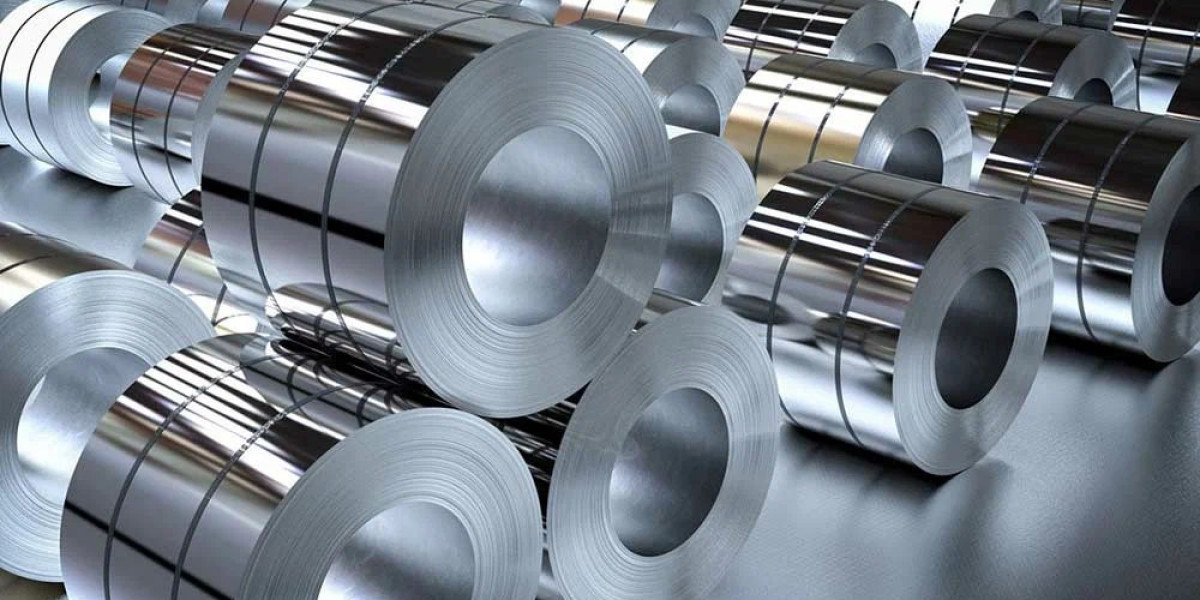The global steel market is projected to grow steadily, reaching USD 3,371.7 billion by 2035 at a CAGR of 4.4%.This growth is fueled by rising demand across construction, automotive, and infrastructure sectors.
Urbanization and renewable energy projects are key drivers for structural and specialty steel use.
Steel remains a cost-effective, high-strength material for large-scale, high-load applications.
Technological advancements in alloy composition and production are enhancing steel performance and sustainability.
Gain Full Market Perspective – Get the Full Report
This growth is driven by sustained demand across the construction, automotive, infrastructure, and energy sectors. As economies invest in urban development and green energy infrastructure, structural-grade and specialty steels are gaining traction for their strength, cost-efficiency, and adaptability to diverse applications.
Browse Full Report: https://www.futuremarketinsights.com/reports/steel-market
Market Share and Segment Analysis
Carbon Steel Dominance: Carbon steel is anticipated to lead the material segment with 42.3% of total revenue in 2025. Its application in infrastructure, pipelines, and machinery underscores its cost-to-performance benefits.
Building and Construction: This end-use sector is projected to account for 38.5% of steel consumption in 2025, driven by urban expansion, public infrastructure projects, and commercial real estate development.
Regional Spotlight: Germany is expected to register the fastest CAGR of 4.5%, primarily due to investments in automotive and shipbuilding sectors.
Market Penetration Across Industries
Steel comprises 70–75% of the ferrous metals market, reinforcing its dominance in iron-based materials.
In the overall metals market, steel represents 45–50%, owing to its widespread application.
In construction materials, steel contributes 30–35%, essential for structural integrity.
In automotive manufacturing, it holds a 25–30% share, particularly in frames and body components.
Industrial raw materials see a 20% share, while engineering applications account for 15–20%, driven by demand for durable, versatile inputs.
Technology and Innovation Trends
Hydrogen-Based Steelmaking: Manufacturers are investing in hydrogen reduction processes to cut carbon emissions.
Electric Arc Furnaces (EAF): Increasing adoption of EAFs supports energy efficiency and recycling.
Lightweight Alloys: Development of high-strength, lightweight steels is accelerating, especially for electric vehicle (EV) production.
Customized Steel Grades: R&D focuses on improving corrosion resistance, heat tolerance, and recyclability.
AI and Digitalization: AI-driven predictive maintenance and real-time quality monitoring tools are streamlining production efficiency.
Sustainability and Regulatory Drivers
Key nations like Germany, France, and Japan are incentivizing low-carbon steel production.
Regulatory initiatives such as the EU's Carbon Border Adjustment Mechanism (CBAM) and the USA’s Inflation Reduction Act are catalyzing decarbonization investments.
Steelmakers are adopting green hydrogen, carbon capture technologies, and EAF upgrades to meet environmental targets.
Challenges and Strategic Responses
Raw Material Volatility: Unpredictable prices for iron ore and coking coal pose challenges for pricing and profitability.
Geopolitical Uncertainty: Trade disruptions and regional tensions are prompting localized production strategies.
Supply Chain Resilience: Producers are securing long-term supplier agreements and developing regional manufacturing hubs.
Top Investment Segments
Carbon Steel (42.3% market share in 2025)
Stainless Steel (austenitic, ferritic, martensitic)
Alloy Steel (low and high alloy)
Tool Steel and Others (weathering steel)
The global steel market is set to experience sustained growth through 2035, underpinned by industrial expansion, infrastructure investments, and innovation in low-carbon technologies. While raw material price volatility and geopolitical risks persist, advancements in digital manufacturing, customized steel solutions, and regulatory support for decarbonization are reinforcing the sector's resilience and future potential.



